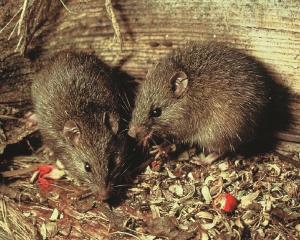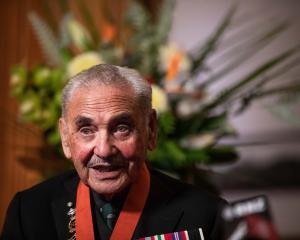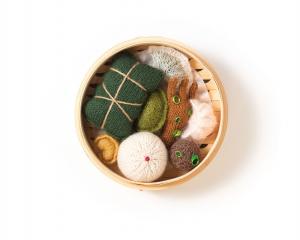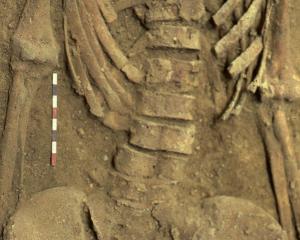
Almost 70 years ago they were known as "Nazi sympathisers" and "traitors" and in Britain they are reviled still.
They were the British and Commonwealth soldiers who changed sides during World War 2 and joined a unit created by the Nazi Party's Waffen-SS, called the British Free Corps - sometimes referred to as Hitler's "most evil unit".
The corps recruited from prisoner of war camps, offering soldiers the chance to fight alongside Germany against the communist Soviet Union.
A

So says author Adrian Weale who has spoken to the Otago Daily Times from his home in London.
The public face of the corps was New Zealander Lance Corporal Roy Courlander, who toured prisoner of war camps throughout Germany and Austria, gathering recruits on behalf of the SS.
He was eventually captured by the Allied army in Brussels - still wearing his SS uniform.
And, after the war he was court-martialled and sentenced to 15 years' jail.
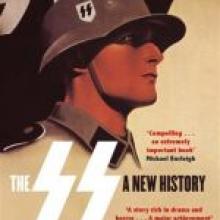
Mr Weale's new book retells Courlander's story but also adds some new information about a lesser known group of six Maori who "volunteered" to join the corps.
He says a German recruiter for the corps "came across" a group of Maori prisoners of war who were working on a labour party somewhere around Dresden.
"[He] persuaded them that joining the SS was the thing."
But corps members led by Scottish NCO Hugh Wilson Cowie objected to the Maori group joining the corps.
Mr Weale says Cowie protested to the German leadership that the corps was for "whites only".
As a result, the Maori group was only at the corps barracks for a very short period - "no more than a day or two" - before being returned to their working party.
Mr Weale says they were never issued uniforms or enrolled into the unit and were, like other corps members, probably induced to join by the promise of freedom, beer and sex.
"I'm not sure what the situation would have been for Maori associating with German women but certainly that was one of the things that the white volunteers were able to do.
"For most [corps members], they had been POWs since 1941-42 and the chance to have a reasonably normal relationship with a woman was quite a big inducement for them.
"They [recruiters] may have appealed to their anti-communist sentiments but that wasn't a really serious issue with any of them I don't think.
"It was just a chance to get out of the camps where a lot of them were going stir-crazy."
Mr Weale says the names of the six Maori were not recorded, and the only name he had ever seen associated with the group was "Private Busby", "... and that was the recollection of a [corps] member under interrogation about a year later.
"Literally the only name that gets mentioned is Private Busby and that's just some sort of phonetic spelling based on what the guy remembered."
Mr Weale said the interrogations were used as evidence against corps members at court martials and he obtained the records from the British National Archives.
Some information had also come from recently released MI5 archive material.
"I think the irony is that the SS, which was this profoundly racist organisation, was quite happy to accept Maori but their British and Commonwealth comrades weren't.
"So it's a small story but an ironic one certainly."
Mr Weale points out the refusal to accept the Maori group had a significant effect on the corps.
"The Germans' intention was to recruit 30 members for the [corps], form them into an infantry platoon and send them into combat against the Soviet army as a propaganda stunt.
"The strength of the [corps] when the Maoris were recruited was in the mid-20s and it is possible that if they had been accepted into the [corps], it would have achieved this critical mass."
Mr Weale said if the corps had reached the front it would have been filmed and photographed to show members of the British Empire fighting alongside the Germans against the Soviets.
He describes the SS's attempts at establishing the corps as "fairly half-arsed" mainly because Courlander and other recruiters "didn't really have a clue what they were doing".
He considered that while the SS was "very ruthless" in some things, in other ways it was a "ridiculously amateurish organisation".
"At times they did ludicrously stupid things and I think the attempt to form the [corps] was one of them.
"There are plenty of other examples in the book of the SS acting in a way which almost defies belief.
It's so amateurish and incompetent."
Mr Weale says when Courlander was captured after being injured, unlike other corps members he was not able to get rid of incriminating evidence.
He was still wearing his corps uniform and had his German SS pay-book, identity discs, Union Jack arm badges and photos.
"At least some of these survived because they are listed as exhibits at his court martial and when his court martial documents were sent back to New Zealand in 1946 they were with them."
Mr Weale believes New Zealand military archives might still hold the material but he is not so sure the archives still have the uniform.
"This was apparently lent out for an amateur theatrical production in the 1960s or '70s and never returned.
"I got that from a guy who was an archivist in New Zealand defence headquarters a few years ago.
"This uniform now, to collectors, would probably be worth 20,000 or 30,000 ($40,000-$60,000) and it is probably sitting in some trunk somewhere in a school office."
"As far as I am aware, there are no other artefacts [of the corps] around, apart from a few photos."
Mr Weale's book is due to be released in New Zealand next month.
FACT FILE
The only British Free Corps uniform known to have survived World War 2 belonged to New Zealand Lance Corporal Roy Courlander. It could still be somewhere in New Zealand. It would have looked like a German SS uniform with:
> a British Free Corps flash on the left arm
> a three-lion passant collar tab
> cuff title bearing "British Free Corps" in gothic script
> a German eagle
> a cap bearing the death's head symbol




